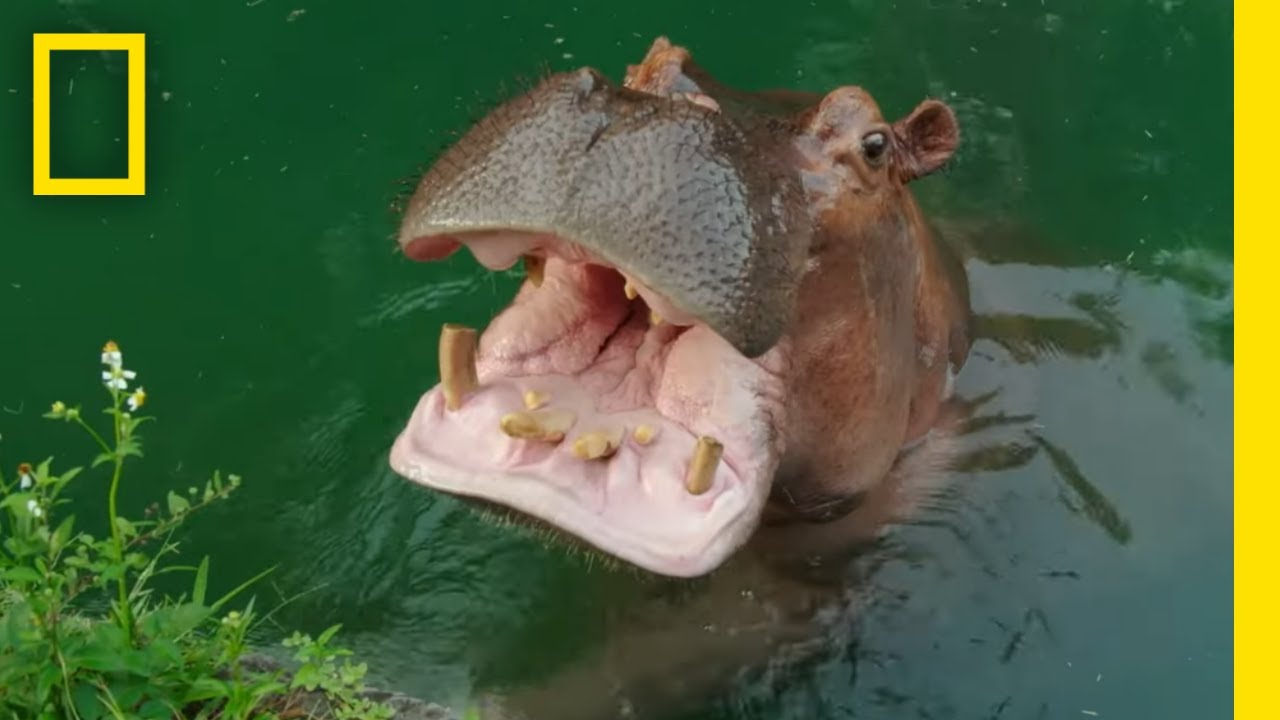– Insights into the dietary habits of hippos and their natural preferences
– The role of enrichment activities, such as feeding hippos watermelons, in zoo management
– The impact of Disney’s Animal Kingdom’s approach to education and wildlife conservation
– Adopting sustainable practices in the care and management of captive animals
Hippos, or Hippopotamus amphibius, are among the most intriguing creatures that inhabit our planet’s waterways. Primarily found in sub-Saharan Africa, these enormous mammals are known for their aquatic lifestyle and significant size. Understanding their dietary habits, which in the wild primarily consist of grass, is critical to appreciate the significance of hippos eating watermelons as part of their enrichment in captivity.
Enrichment activities are a pivotal aspect of modern zoo management and animal care. These practices are crucial for stimulating the animals’ physical and mental health, closely mimicking the challenges and diversity they would encounter in their natural habitats. Feeding hippos watermelons at Disney’s Animal Kingdom perfectly illustrates such an enrichment activity. This provides dietary variety for these massive mammals and engages them in a natural foraging behavior despite the unusual food item. It’s an imaginative yet scientifically grounded approach to ensuring the well-being of captive animals.
Disney’s Animal Kingdom stands at the forefront of combining education with wildlife conservation, presenting an innovative model for zoos worldwide. Their strategy goes beyond entertainment, immersing visitors in the intricate details of animal care, ecology, and conservation. The visual of hippos crunching on watermelons effortlessly conveys messages on animal diet, habitat, and the broader environmental impacts on species survival. This approach amplifies public awareness and fosters a deeper appreciation for wildlife conservation efforts.
The park’s commitment extends to adopting sustainable practices in managing captive wildlife populations. Sustainable zoo management is crucial in ensuring that captive breeding programs, habitat construction, and day-to-day operations do not adversely affect the environment or the well-being of the animals. Disney’s Animal Kingdom exemplifies this commitment by integrating conservation research, renewable resources, and education into its operational model. This holistic approach towards zoo management benefits the resident animals and contributes to global conservation goals.
Addressing hippos’ dietary preferences and requirements, in particular, sheds light on the broader topic of nutritional welfare in zoological settings. Hippos in the wild primarily consume grass. However, the controlled environments of zoos necessitate a tailored approach to meeting their nutritional needs. While not a natural food source for hippos, watermelons offer a safe and nutritionally suitable option that adds variety to their diet. This practice underscores the importance of understanding animal nutrition and the creative strategies zoos employ to maintain animal health and happiness.
Furthermore, the role of enrichment activities, exemplified by hippos eating watermelons, underscores a progressive shift in zoo management philosophy. These activities are instrumental in promoting natural behaviors, preventing boredom, and enhancing captive animals’ overall quality of life. They require a deep understanding of animal behavior and ecology, attributes that are fundamental to the modern zoologist’s skill set. Watching a hippo interact with a watermelon provides a moment of delight and serves as a tangible representation of the complex and informed strategies that go into modern zoo management.
Disney’s Animal Kingdom’s portrayal of these enrichment activities brings crucial educational and conservation messages to a broad audience. Their efforts in showcasing the behind-the-scenes work involved in animal care and conservation play a vital role in demystifying the challenges and complexities of wildlife protection. Engaging and informing the public in this manner enhances the visitor experience and cultivates a generation more informed and passionate about conservation.
In conclusion, hippos eating watermelons at Disney’s Animal Kingdom encapsulates the sophisticated balance between animal welfare, education, and conservation. It reflects a deeply informed approach to zoo management, where every aspect, from dietary enrichment to public engagement, is meticulously considered. As zoos evolve, integrating best practices in animal care with conservation education, they become ever more vital in the global effort to protect our planet’s remarkable biodiversity.
*****
Source Description
Tequila the Hippo enjoys a watermelon snack on a summer day. The Magic of Disney’s Animal Kingdom hands viewers an Access All Areas pass to two stunning animal parks—Disney’s Animal Kingdom and Epcot’s The Seas with Nemo & Friends. Meet their incredible animals and passionate keepers and see, for the first time, everything that goes into caring for some of the most rare and beautiful creatures on earth.
➡ Subscribe: http://bit.ly/NatGeoSubscribe
#NationalGeographic #AnimalKingdom
About National Geographic:
National Geographic is the world’s premium science, exploration, and adventure destination. Through their world-class scientists, photographers, journalists, and filmmakers, Nat Geo gets you closer to the stories that matter and past the edge of what’s possible.
Get More National Geographic:
Official Site: http://bit.ly/NatGeoOfficialSite
Facebook: http://bit.ly/FBNatGeo
Twitter: http://bit.ly/NatGeoTwitter
Instagram: http://bit.ly/NatGeoInsta
TikTok: http://www.tiktok.com/@natgeo
Tenor: http://on.natgeo.com/31b3Koc
Hippos Eating Watermelon | Magic of Disney’s Animal Kingdom
National Geographic
https://www.youtube.com/natgeo


